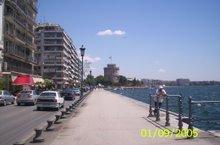By INVESTOR'S BUSINESS DAILY
Leadership: When it comes to economic performance, there's no contest: Apart from the early years of the Depression, Jimmy Carter's brief tenure as president was the worst in the 20th century.
Profile In Incompetence: Second In A Series
More on this series
Carter's rather smug attempt to rank President Bush as the worst president ever wouldn't be so bad if it weren't so wrong. The irony, of course, is that the peanut farmer from Plains, Ga., shares that distinction with a number of other presidential mismanagers of our nation's economy.
Carter apparently has gotten so used to being called the "greatest living former president" that he's forgotten to consult the record. And what the record shows is he inherited a bad economy and made it worse — much worse — before a man named Ronald Reagan came in and changed course.
Here's where things stood in 1980, Carter's last year in office, and in subsequent periods:
• Carter: Interest rate, 21%. Inflation, 13.5%. Unemployment, 7%. The so-called "Misery Index," which Carter used to great effect in his 1976 campaign to win election, 20.5%.
• Reagan's last year: Interest rate, 9%. Inflation, 4.1%. Unemployment, 5.5%. Misery Index, 9.6%.
• Bush today: Interest rate, 8%. Inflation, 2.6%. Unemployment, 4.5%. Misery Index, 7.1%.
It's not even close. The only question is: Why did things get so bad under Carter? And that's a long story. The fundamental reason, however, is he made mistake after mistake, blinded by the leftist rhetoric his party adopted after the infamous '72 Democratic Convention, when the so-called New Left seized control.
In office, Carter adopted the Keynesian economics of the time, buying into the theory that there was a reverse "trade-off" between inflation and unemployment — an idea that proved spectacularly wrong. The U.S. became mired in "stagflation," with both inflation and unemployment rising sharply.
As things grew worse, Carter sharply boosted government spending. When that didn't work, he blamed the American people. "I think it's inevitable that there will be a lower standard of living than what everybody had always anticipated," he told advisers in 1979. "The only trend is downward. But it's impossible to get people to face up to this."
Those remarks were followed by his now-famous "malaise" speech in which he unveiled six proposals — including import quotas, windfall profits taxes and increased spending on alternative fuels — to combat higher oil prices charged by OPEC. Nothing about tax cuts. Nothing about finding more energy. In short, he told Americans to consume less, but pay more.
"We have learned that 'more' is not necessarily 'better,' and that even our great nation has its recognized limits," Carter said, borrowing heavily from the "limits to growth" movement that swept liberal intellectual circles in the '70s.
With public anger growing and his own polls lagging, Carter started wearing sweaters and encouraging us to turn down the thermostat. But his big spending didn't work. The resulting budget deficit, 12 times bigger than the one President Nixon left, gave him a serious public relations problem.
On this score, Carter might have escaped his own malaise if he had cut taxes to get the economy going again. But even with marginal income tax rates at a hefty 70%, he accepted the common wisdom that a tax cut would boost inflation and lower government revenue. He was dead wrong.
As noted in "The Commanding Heights," a leading economic history of the last century, "Carter's attempts to follow Keynes' formula and spend his way out of trouble were going nowhere."
Eventually (but grudgingly), Carter did agree to slash the tax rate on capital gains to 28% from 40%. But that didn't kick in until 1979. By then it was too late to help him politically.
Two other moves have garnered Carter praise: setting deregulation in motion and naming Paul Volcker as Fed chairman in 1979. Carter did begin deregulation, for which he deserves credit. And to be sure, Volcker clamped down on the growth in money supply, bringing on a deep recession but also killing the inflationary spiral.
Inflation, however, was already easing when Carter entered office. It was only after he named a political supporter, the late G. William Miller, as Fed chairman that prices really took off. Miller, who served only a year, is now viewed as the worst Fed chief ever.
Volcker? He wasn't Carter's choice. He was nominated only after a contingent of Wall Street power brokers, alarmed at the economy's decline, went to the White House and demanded the appointment of the well-respected president of the New York Fed.
In his last years in office, Carter spoke of an "erosion of our confidence in the future." But his failure to support the Shah of Iran led to a takeover of that oil-rich republic by fundamentalist Muslims, and a second Mideast oil shock hammered the economy and pushed inflation to new highs.
Desperate, Carter tried "voluntary" wage and price controls. They didn't work. He tried credit controls. They didn't work. He kept oil-price controls mostly in place, and created a vast new bureaucracy — the Energy Department — that has since wasted tens of billions of dollars without creating a single drop of new energy.
The result can be seen in key indicators of American well-being. Real median after-tax income fell nearly 3% during Carter's last two years. For his entire term, productivity — the fuel for future growth in standards of living — rose a miserable 0.6% a year.
That's why, when candidate Ronald Reagan said, "Ask yourself if you're better off today than you were four years ago," the answer came back a resounding "No."
Tag Cloud
2007-05-24
Jimmy Carter: Profile In Incompetence - 'Malaise' Maestro
Posted by
Αντωνης Βαλαμoντες
at
7:09 PM
![]()
Subscribe to:
Post Comments (Atom)
My Headlines




No comments:
Post a Comment